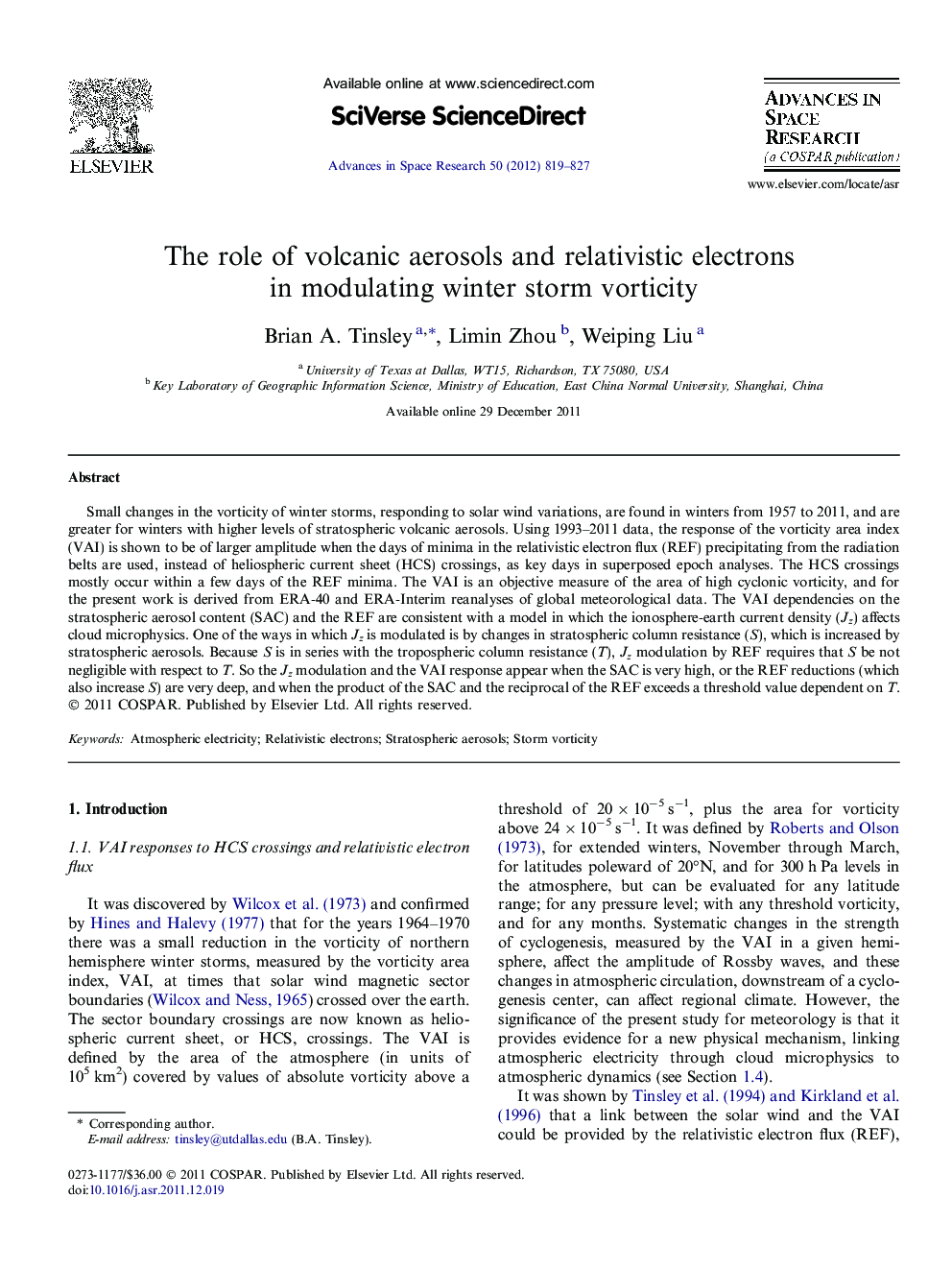| Article ID | Journal | Published Year | Pages | File Type |
|---|---|---|---|---|
| 1765111 | Advances in Space Research | 2012 | 9 Pages |
Small changes in the vorticity of winter storms, responding to solar wind variations, are found in winters from 1957 to 2011, and are greater for winters with higher levels of stratospheric volcanic aerosols. Using 1993–2011 data, the response of the vorticity area index (VAI) is shown to be of larger amplitude when the days of minima in the relativistic electron flux (REF) precipitating from the radiation belts are used, instead of heliospheric current sheet (HCS) crossings, as key days in superposed epoch analyses. The HCS crossings mostly occur within a few days of the REF minima. The VAI is an objective measure of the area of high cyclonic vorticity, and for the present work is derived from ERA-40 and ERA-Interim reanalyses of global meteorological data. The VAI dependencies on the stratospheric aerosol content (SAC) and the REF are consistent with a model in which the ionosphere-earth current density (Jz) affects cloud microphysics. One of the ways in which Jz is modulated is by changes in stratospheric column resistance (S), which is increased by stratospheric aerosols. Because S is in series with the tropospheric column resistance (T), Jz modulation by REF requires that S be not negligible with respect to T. So the Jz modulation and the VAI response appear when the SAC is very high, or the REF reductions (which also increase S) are very deep, and when the product of the SAC and the reciprocal of the REF exceeds a threshold value dependent on T.
